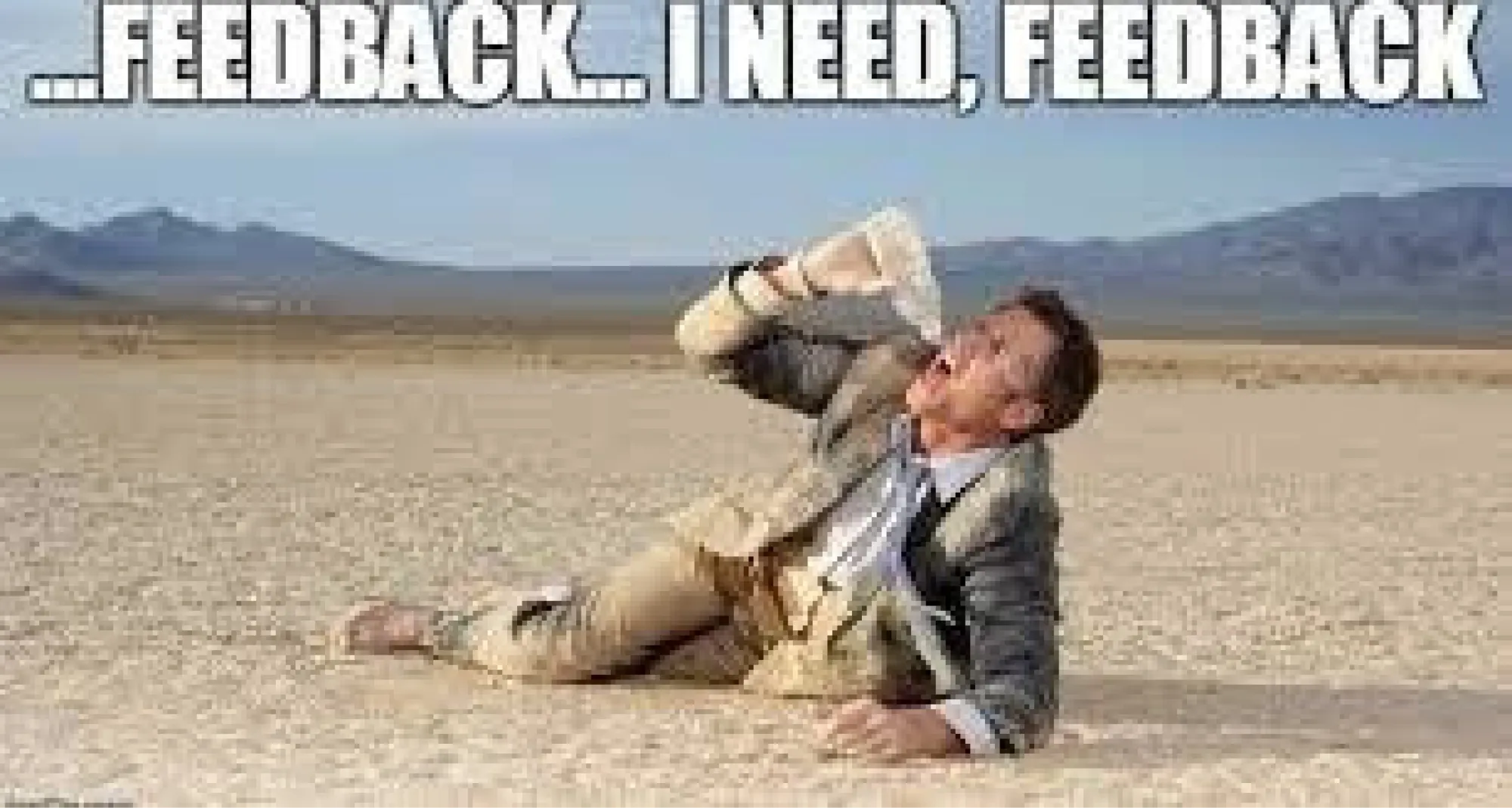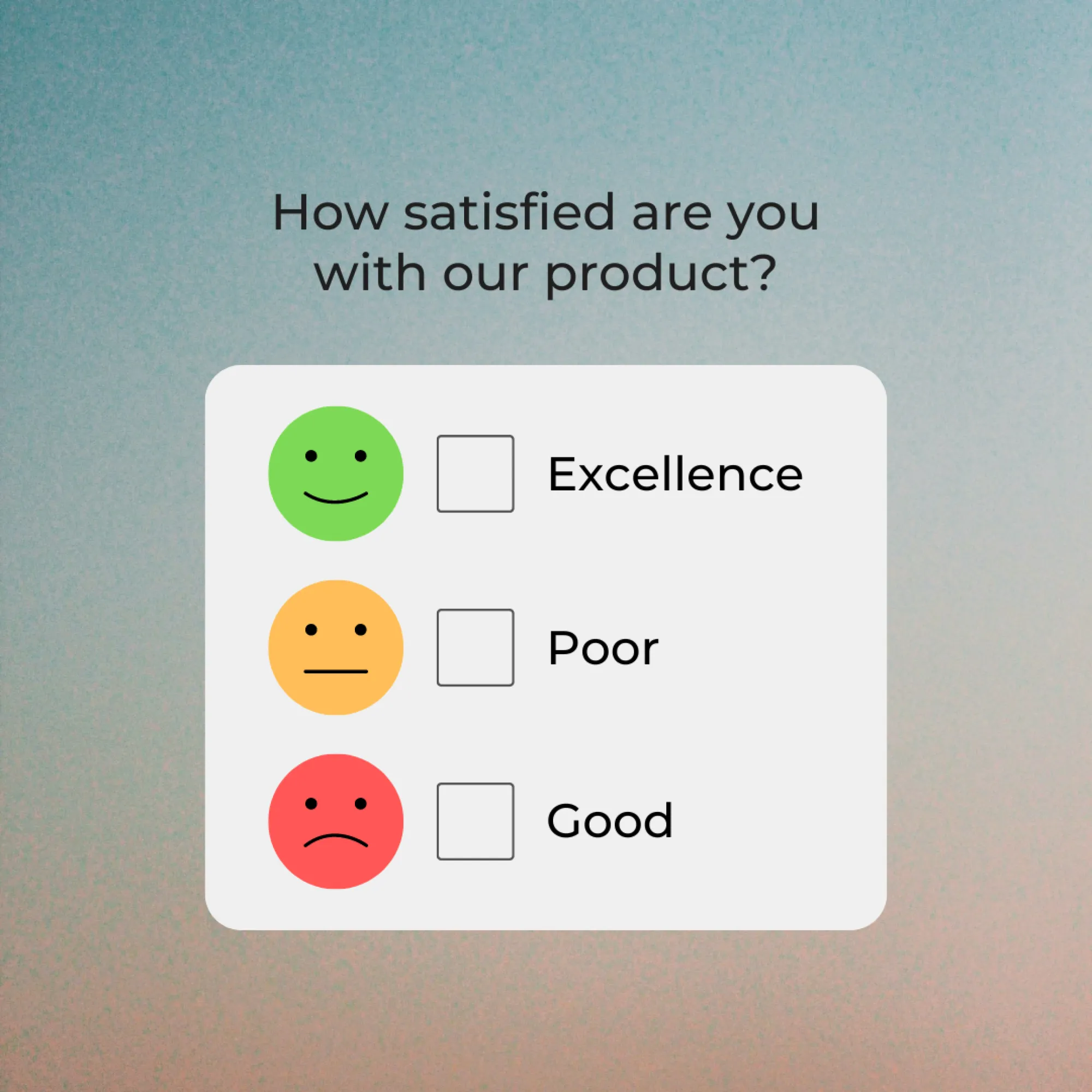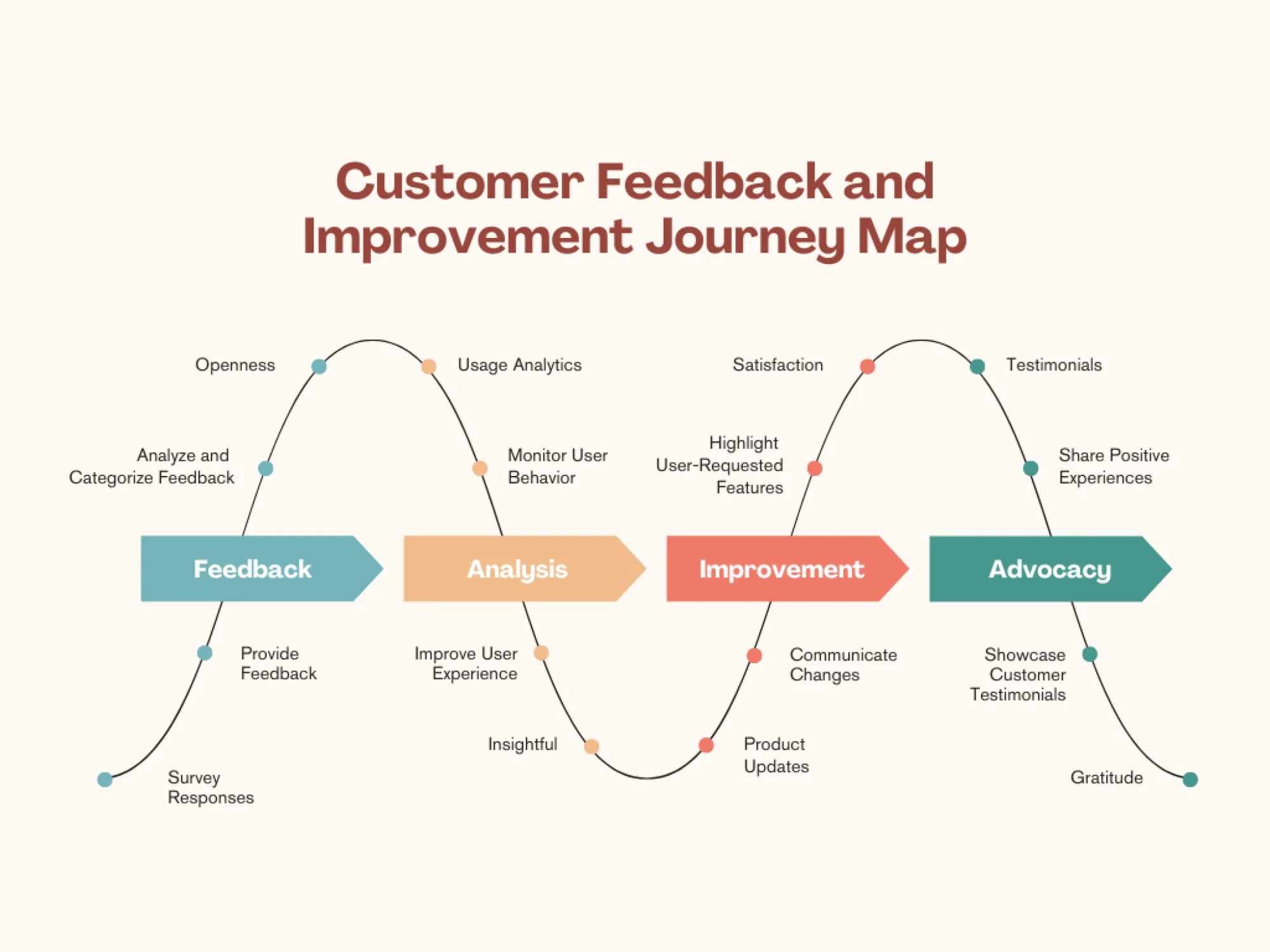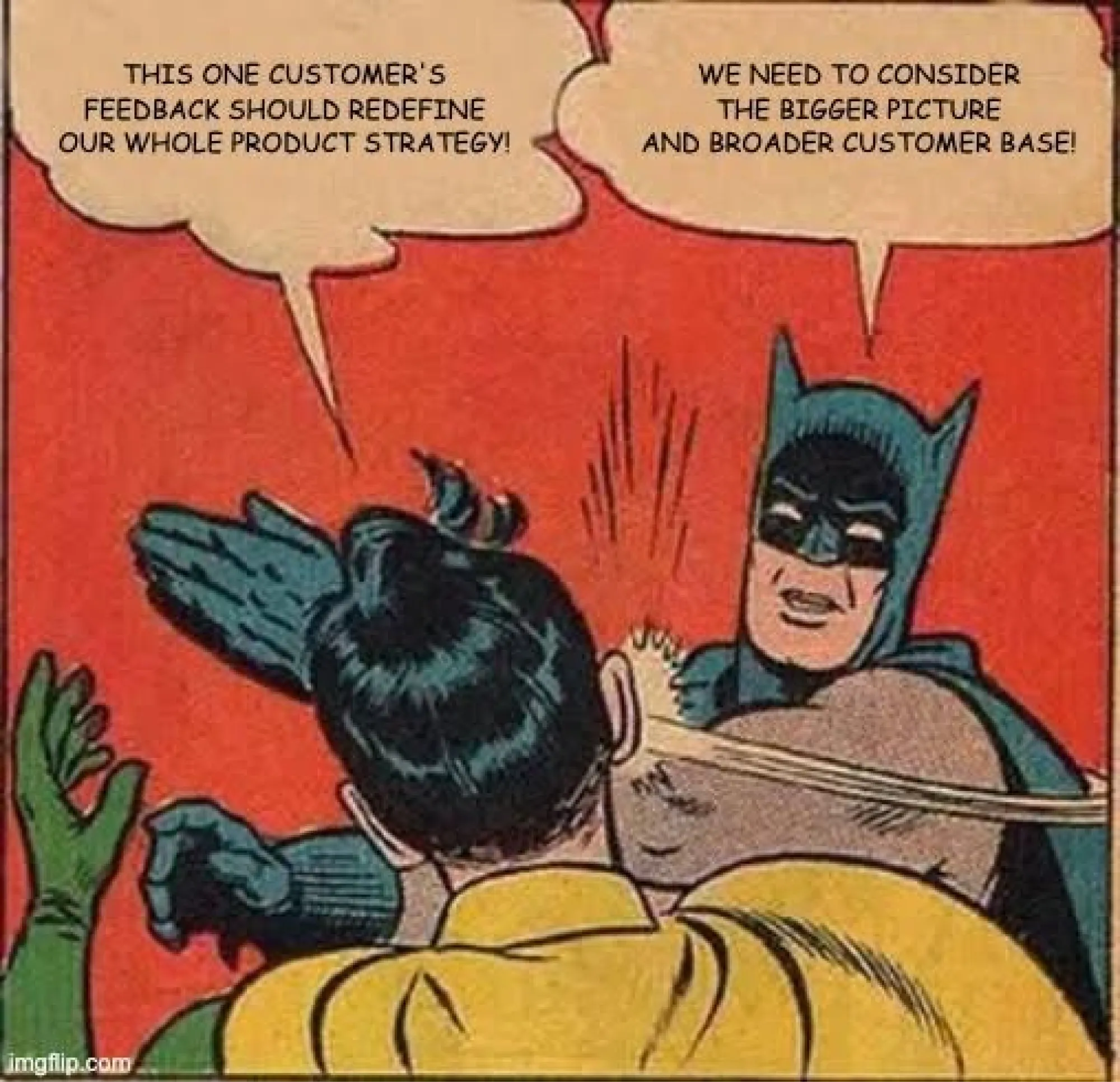Creating a product without a feedback loop is like DJing blindfolded. You might drop some beats, but you have no clue if the crowd is grooving or groaning.
A truly effective product feedback loop is akin to a DJ's complete setup:
- Real-time crowd response visibility
- Ability to adjust based on engagement
- Adaptability to maintain crowd enthusiasm
Without this, even top DJs risk emptying dance floors. Similarly, product teams may waste resources on unpopular features or miss revenue-boosting improvements.
So, how do you perfect your product’s feedback loop to create something users love?

Use in-app surveys for structured feedback
Let's stick with the dancefloor analogy:
You're a wedding DJ, and you've just dropped a reggaeton track. Everyone's moving; the vibe is electric. Then someone grabs the mic and shouts, "Yo! Yo! Yo! Who wants to hear some hard rock?" The crowd freezes, confused. Groove? Killed.
That's exactly what unstructured feedback requests feel like for users: abrupt. A vibe killer. A big no-no.
Best practices for creating in-app surveys
Just as a skilled DJ reads the room to keep the party going, your in-app surveys should blend seamlessly with the user experience.
Timing is everything
This is where understanding your product’s workflow is super important. If a user is deep in the zone, that’s not the time to interrupt them with a survey. Wait for a natural pause, like when they’ve just hit “save” or are about to log out. Also, good timing isn’t only when you ask, but how often. Users don’t want to be pestered after every little action, so space out your surveys thoughtfully to avoid fatigue.
Keep it short and sweet
Aim for 1-3 questions max, and make each one count. Why? Because your users are busy with a million things vying for their attention. They won’t settle in or ask lengthy questions (who has the time?).
An example of survey question order and brevity:
Start with your most crucial question, your heavy hitter, the one piece of information you absolutely need. Maybe it’s a Net Promoter Score: “On a scale of 0-10, how likely are you to recommend us to a friend”? This gives you a quick pulse on overall satisfaction.
For your second question, dig into the “why” behind their first answer. Make it open-ended but specific: “What’s the main reason for your score?” This lets users express themselves without being overwhelmed.
If you have room for a third, make it action-orientated. Something like, “What’s one thing we could do to improve your experience?” This provides concrete feedback you can act on. Remember, each question should serve a clear purpose.

How to phrase questions to capture actionable feedback
Crafting questions for your in-app surveys is like composing a hit song – every word counts.
Be specific
First off, “Did you like our new feature?” is as useful as asking if someone likes listening to music. Most people do, and it doesn’t tell you anything meaningful. Instead, get specific: “How easy was it to schedule your first meeting using our new calendar tool?” See the difference? Now you’re getting to the heart of user experience.
Prioritize actionable insights
Ask yourself, “What can I do with this information?” before asking your users questions. “Was this feature useful?” doesn’t give you much to work with. But, “How much time did this feature save you compared to your old process?” - now that’s valuable because you can use the data to improve and market your SaaS product.
Use positive framing
Instead of “What didn’t you like about the onboarding?” try “How could we make the onboarding process smoother for you? The first question puts users on the defensive, the second invites creativity. Questions that feel like you’re genuinely curious yield feedback that actually moves the needle.
Leave the door open
"Is there anything else you'd like to share about your experience?" can lead to some overlooked insights. It's like giving someone the chance to tell you what you didn't even know you needed to ask. Knowing that 75% of users rate your new feature 4 out of 5 stars is nice, but understanding why they love it is gold.
Leverage product logs
Look, surveys are great, but they're not the only trick up your sleeve for getting the lowdown on what users think. Ever peeked at your product logs? They're a treasure trove of intel on how customers are really putting your product to work.
What product logs can tell you
Product logs show what your users actually do, not what they say they do or what they think they might do.
They provide a detailed record of the following:
- Most/least used features
- User navigation patterns
- Error hotspots
- Performance speed
- New feature adoption rates
- Retention and churn indicators
- Usage patterns across user segments

Product logs + AI = instant hit
Now, it's also possible to take things up a notch by using a tool like Command AI's Copilot - a user assistance platform (UAP) you can configure to help users with on-demand help, including interactive walkthroughs and personalized responses.
For instance, Copilot notices when a user repeatedly clicks around a particular feature without success. It interprets this as frustration and triggers a helpful nudge. Your user didn't have to fill out a survey to tell you they were getting irritated; their actions spoke louder than words.
Copilot can even perform tasks on behalf of your users and continuously learns from your help center, website, product tours, and users, creating a virtuous cycle that helps you deliver better products and customer service.
Why real-time feedback keeps the beat
You get to see how customers truly behave when no one's watching – no survey bias, no performance at the front of the stage by the DJ. It's a constant stream of genuine insights.
The beauty of this approach? You're not pestering users with endless "How was your experience?" pop-ups. They do their thing, and you learn from it. Plus, you're hearing from everyone, not just the vocal few who fill out surveys.
As you observe, you'll often uncover things you never even thought to ask about. While surveys have their place, this fly-on-the-wall approach is different. You're not guessing where your users are heading – you're right there with them, seeing the journey through their eyes.
How to turn your product feedback into action
Product teams often struggle with transforming valuable user feedback into concrete, actionable decisions for their product roadmap. If you've ever felt like you're drowning in a sea of feature requests, bug reports, and "wouldn't it be nice if..." ideas, you're not alone. We've been there too, and we've got some strategies to help.
Get organized
The first step is to set up a system that consolidates insights from various sources. This includes urgent support tickets, candid survey responses, tips from your sales team, and product usage analytics.
Think of it like creating playlists for different moods: your upbeat "Feature Request Remixes," the melancholic "Bug Report Blues," and the surprising "Sales Team Serenades."
Scrutinize your product analytics as well. Usage patterns speak volumes about what customers value most in your product, often revealing insights that users themselves might not think to mention.
Together, these diverse sources of feedback build a multifaceted understanding of your users' needs and experiences. A holistic view is invaluable as you move forward in your product development journey.
Then question everything
When crafting your product roadmap, think like a DJ at a club (just don't show up to your next board meeting in sunglasses and a snapback)... yes, we’re still riffing with this analogy:
1. Read the crowd: Which features are users grooving to? What requests are they shouting? This is your real-time feedback.
2. Mix it up: Introduce new features (tracks) that vibe with your overall sound (product vision) and the club's (company's) style.
3. Keep the rhythm: Pace yourself. Ensure your team (crew) can handle new additions without missing a beat.
4. Master transitions: Plan how to roll out new features smoothly. Decide which features to develop next based on user needs and business goals. Be ready to deprecate features that aren't adding value.
Pro tip: Set up regular review sessions - daily standups, weekly sprints, monthly releases, and quarterly strategy reviews - to prioritize immediate fixes and long-term improvements.
Remember, just like great DJs create unforgettable nights, not just playlists, so do great products deliver experiences, not just features.

Close the loop
Turn user feedback into a celebration. Alert users once you've updated features and incorporated their ideas. Fire off an email or ping them in the app - people love knowing they've made a real difference.
And why not share new updates on social media? Let your customers know they've been heard. You could even carve out a little space on your website to show off the cool stuff you've built based on user feedback. (Everyone likes it when the DJ plays their request.)
SaaS companies that do feedback loops it right
Slack, Trello, and Miro have awesome feedback loops, turning user input into tangible improvements and fostering a sense of community around their products.
Slack
Slack values user voices through its lively public feedback forum. Users pitch and vote on ideas, which the product team eagerly incorporates into their agile process. This approach leads to frequent, user-inspired updates. Slack keeps everyone in the loop with snappy release notes and blog posts.
Trello
Similarly, Trello's "Feature Requests" board is open for users to submit and vote on suggestions. The company regularly reviews feedback and keeps users updated on progress via cards on the board, letting everyone see what features are being developed, what's on hold, and what's been released.
Miro
Miro, the popular online whiteboard platform, tunes into user needs through regular interviews and surveys. They've also set up a lively public forum where users can champion their favorite feature ideas. The Miro team actively responds to these suggestions, and shares updates through timely in-app notifications and detailed posts on their product blog.
Iterate, innovate, inspire: keeping the feedback loop spinning
Stay in sync with your audience by listening closely to their changing tastes. Fine-tune your offering based on real feedback, not assumptions. That's how you create a product that users love.
To replay:
1. Craft smart in-app surveys (timing is everything!)
2. Dive into product logs (they're goldmines of insights)
3. Leverage AI tools like Copilot (your 24/7 feedback buddy)
This multi-channel approach helps you spot trends, catch issues early, and uncover opportunities you might otherwise miss. It's about understanding, not just listening.
Ready to amplify your product feedback loop

















